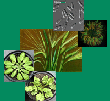| Mohiley, A; Laaser, T; Höreth, S; Clemens, S; Tielbörger, K; Gruntman, M: Between the devil and the deep blue sea: herbivory induces foraging for and uptake of poison in plants, Proceedings of the Royal Society B: Biological Sciences (2021), doi:/10.1098/rspb.2021.1682 | |
| Abstract: Plants have been shown to change their foraging behaviour in response to resource heterogeneity. However, an unexplored hypothesis is that foraging could be induced by environmental stressors, such as herbivory, which might increase the demand for particular resources, such as those required for herbivore defence. This study examined the way simulated herbivory affects both root foraging for and uptake of cadmium (Cd), in the metal-hyperaccumulating plant Arabidopsis halleri, which uses this heavy metal as herbivore defence. Simulated herbivory elicited enhanced relative allocation of roots to Cd-rich patches as well as enhanced Cd uptake, and these responses were exhibited particularly by plants from non-metalliferous origin, which have lower metal tolerance. By contrast, plants from a metalliferous origin, which are more tolerant to Cd, did not show any preference in root allocation, yet enhanced Cd sharing between ramets when exposed to herbivory. These results suggest that foraging for heavy metals, as well as their uptake and clonal-sharing, could be stimulated in A. halleri by herbivory impact. Our study provides first support for the idea that herbivory can induce not only defence responses in plants but also affect their foraging, resource uptake and clonal sharing responses. |

